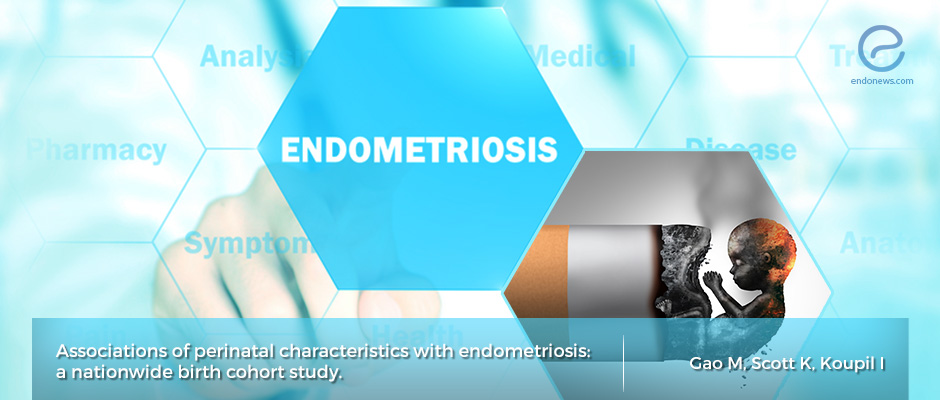Perinatal risk factors for endometriosis
Sep 30, 2019
The exposure to an adverse environment or restricted development during the perinatal period may increase the risk of endometriosis.
Key Points
Highlights:
- Exposure to maternal smoking and growth restriction during the fetal period increases the risk of endometriosis at early to mid-reproductive life.
Importance:
- The findings of this study may help in understanding the cause of endometriosis and identifying targets for public health intervention.
What’s done here?
- Researchers investigated the associations of maternal and birth characteristics with the risk of endometriosis among Swedish women of reproductive age.
Key Points:
- The daughters of women who smoked during their pregnancy were at higher risk of early-onset endometriosis. The adverse effects of maternal smoking on endometriosis may result from the slow growth rate in fetal life.
- Women born with lower birth weight and lower birth weight-for-gestational age were more likely to have endometriosis during early to mid-reproductive period irrespective of their gestational age at birth.
- Women born to foreign-born mothers, especially those who came from other Nordic countries and the former Soviet states had higher risks of endometriosis.
- The incidence of endometriosis was decreased in women born to older mothers.
- No association was observed between the mother’s parity and the incidence of endometriosis.
Limitations:
- Only cases recorded in the inpatient and outpatient care were included in this study, and cases in primary care may be missed.
- Since cases presenting in later reproductive ages could not be captured, the generalizability of our study was somewhat confined.
- Self-reported information on maternal smoking during pregnancy was only collected at the first antenatal visit.
- The within-family comparison of the authors could not account for unmeasured family-varying confounding and might have lacked statistical power.
Lay Summary
Gao M. et al., from Sweden analyzed the associations of maternal and birth characteristics with the risk of endometriosis among Swedish women of reproductive age. They have recently published their study in the "International Journal of Epidemiology".
The authors conducted a total-population register-based cohort study consisted of more than 625000 singleton women born in Sweden between 1973 and 1987. These women were followed for diagnosed endometriosis from age 15 years until the end of 2012. Among them, 8262 were diagnosed with endometriosis between the years 1987 and 2012. Incidence of endometriosis increased from age 15, with a peak in incidence around age 30, and then decreased until age 40.
Maternal smoking during pregnancy, lower birth weight, and lower birth weight-for-gestational age were found to be associated with an increase in the incidence of endometriosis during the early to mid-reproductive period. Mother’s educational level and the offspring’s incidence of endometriosis were inversely associated. Among women with mothers coming from other Nordic countries and the former Soviet states had a higher incidence of endometriosis. The incidence of endometriosis was decreased in women born to older mothers. No association was observed between the mother’s parity and the incidence of endometriosis.
The strength of this study is that the high diagnostic accuracy in the inpatient data and validity of the national registers minimized potential biases from disease misclassification and recall bias. However, there are some limitations of this study such as:
- Only cases recorded in the inpatient and outpatient care were included in this study, and cases in primary care may be missed.
- Since cases presenting in later reproductive ages could not be captured, the generalizability of our study was somewhat confined.
- Self-reported information on maternal smoking during pregnancy was only collected at the first antenatal visit.
- The within-family comparison of the authors could not account for unmeasured family-varying confounding and might have lacked statistical power.
To conclude, the current study showed that there are risk factors during the perinatal period that increase the risk of endometriosis. We need further research to understand the underlying mechanisms.
Research Source: https://www.ncbi.nlm.nih.gov/pubmed/31270530
maternal smoking birthweight fetal growth endometriosis Sweden total-population cohort

